Lean on Me – A Leaning Chair Primer From Treadmill Desk Experts

I Came Here for the Treadmill Desks…
With the ever-growing body of research about the ill effects of sitting, we’re all looking for ways to minimize the time spent in our chairs. To that end, manufacturers are always thinking about ways to revamp the office. One of the big revolutions happening in office fitness today is the leaning chair, which is more active, less sedentary, and more ergonomic than a conventional office chair. There are already a handful of these odd chairs available, and they’re growing more popular each day.
But first things first. You’re probably wondering…
What the Heck is a Leaning Chair?

You’ll know it when you see it. Leaning chairs are eye catching, and range from positively striking to oddly weird looking. However, just about all of them rely on the same basic mechanism. Rather than encouraging users to sit or stand, leaning chairs support an intermediate mix of the two. In practice, this really does look like a lean; users are largely upright, with their weight supported one-third by the chair and two-thirds by their feet. Hence the angled seats you’ll see on these options. If they’re used right, a user partially settles back against them.
Focal Upright’s Mogo stool is an excellent illustration of this workstyle because it’s impossible to use any other way. While there’s a temptation to settle on top of some leaning stools as if they were standard chairs, doing so with the Mogo will result in an impromptu flying lesson. You can probably see why in this picture:
Why Use a Leaning Chair?
It’s always a good idea to get off your rear, but standing all day has its own problems. Beyond that, there’s the simple fact that it just isn’t all that pleasant after a while. Anti fatigue mats like the EcoLast and insoles can help, and walking is a great way to vary your position and stretch out the limbs. But there’s no getting around it—everyone needs to sit at some point.
We’re major fans of alternating between sitting, standing, and walking at least twice per day, and that’s part of the reason why we find the hybrid positioning of leaning chairs so intriguing. They let you get up and out of that murderous office seat, but they’re also much easier on the legs and feet than a session of unsupported standing. A properly used leaning chair keeps a decent amount of weight on the user’s legs, breaking them out of the sedentary slump, but also takes enough weight off your feet to keep them comfy.
 Most companies in the leaning chair business also tout their products as back-friendly. A leaning posture promotes an open hip angle (halfway between the scrunched right angle of sitting and the full vertical of standing) which in turn helps improve circulation and align the back, taking pressure off the lumbar region. Leaning chairs are also flexible, and allow for more movement than traditional chairs. This movement keeps the muscles around the back engaged to prevent the spine compression that leads to back pain. That’s the theory, anyway. In practice, we’ve found that it’s just as easy to hunch in a leaning chair as it is in any chair, so the onus of proper posture remains firmly on the user.
Most companies in the leaning chair business also tout their products as back-friendly. A leaning posture promotes an open hip angle (halfway between the scrunched right angle of sitting and the full vertical of standing) which in turn helps improve circulation and align the back, taking pressure off the lumbar region. Leaning chairs are also flexible, and allow for more movement than traditional chairs. This movement keeps the muscles around the back engaged to prevent the spine compression that leads to back pain. That’s the theory, anyway. In practice, we’ve found that it’s just as easy to hunch in a leaning chair as it is in any chair, so the onus of proper posture remains firmly on the user.
One for the Treadmill Desks

But what really has us excited about these products is how perfectly some of them complement the treadmill desk. We’re major advocates of alternating every hour or two between sitting, standing and walking while you work, but how exactly do you bring a chair to your treadmill workstation? One option is to get a 72″ or wider desk (with a base that can spread at least 65″) that can fit both a chair and a treadmill side by side, but that’s often not a choice for those with limited space in their office. Space-constrained treadmill desk users will be tempted to just plunk any old folding chair or bar stool on top of their treadmill, but we’d advise against it: most every chair that’ll fit in the 18″ to 21″ space between the treadmill’s side rails will like be lacking in ergonomic adjustment, may potentially damage the treadmill belt, or may be too unstable to be used safely; even if it just feels a little unsafe being elevated half a foot above the surrounding ground level.
The one exception? The iMovR Tempo TreadTop™ Chair is the only ergonomic chair to reach the market, so far, that is in fact highly ergonomically adjustable, quite comfortable by virtue of its thermosensitive polyurethane seating material that molds to the shape of your body, and completely safe to use atop a walking treadmill. For many users this is the perfect accommodation, but the Tempo Chair only works as a chair, and it’s in a slightly higher price bracket the simpler leaning stools (more in the range of quality ergonomic office chairs).

Another favorite of our treadmill desk experts team is the other product in iMovR’s treadtop seat line, the versatile Tempo Sit-Stand Stool. With its high-ranging pneumatic cylinder, it performs as both a chair and as a perching stool, for when you need some relief while standing—plus it’s less expensive. The drawback? While surprisingly comfortable for sitting stints of up to 2 or 3 hrs at a time, it does not offer the all-day comfort of the Tempo TreadTop Chair’s full-sized, ergonomically adjustable back rest. Not that we’d ever recommend sitting all day, but there are situations, such as in a call center, where some users on the 24 hour shift schedule are just not fans of standing or walking, and they need a way to use the same workstation, even if it has a walking treadmill installed. One thing to know about the purpose-built iMovR Tempo seats is that they’re both 100% made in America and come with a lifetime warranty.
Lastly from iMovR, their newest line of active seating is their Birdi Stool, and it has rapidly become one of the most popular options for treadtop seating. Many people find these stools the most comfortable of the iMovR stools, and the bonus is it’s also the least expensive, comes in the many different colors, and is a versatile seat all around the home or office beyond it’s awesome purpose at the treadmill desk.
Back to leaning chairs—or “perching stools,” as they are sometimes referred to. These designer seats have some key advantages over regular chairs. Use one of these at your adjustable-height desk, and you’ll notice a few things. First, they’re super easy to move, so hauling one on and off a treadmill isn’t as cumbersome as picking up and placing a regular office chair. Second, they have tiny footprints, so no worrying about having enough room on the belt (with the exception of the Biofit Fin, which has a base wider than the belt of the even the largest of walking treadmills). And third, because you’re still using your legs to some degree, your weight is distributed more evenly, rather than concentrated on one point. This will protect your treadmill belt from scratches or tears.
That Tilting Feeling
As with all new office fitness products, leaning chairs take some time and practice to use correctly. Note that the majority of leaning chairs (excepting the iMovR Tempo Sit-Stand Stool) are incompatible with fixed-height sitting desks, which are too short for the new leaning position. You’ll need an adjustable height stand up desk that can switch between sitting and standing. The first thing you need to do is set the chair to the correct height. It takes a bit of experimenting to find that ergonomic sweet spot, but there are some guidelines to start you off on the right foot. You of course want to be in as wide an angle as possible. The 90-degree angle of a traditional chair is what you want to get away from; you want an open angle that will protect your lower back, but still take some weight off your feet. Find a chair height that works best, and by all means, feel free to change up your leaning angle whenever you take a sitting break.

Many of the leaning chairs that we’ve seen hit the market thus far also fall into the category of “active chairs.” By making use of swivels, spring joints, or just rubber balls, they bring a little bit of movement into your workday. Active seating isn’t a new concept, and has produced some less-than-healthy fads (do yourself a favor and stay off the bouncy exercise ball). Leaning stools are a safe, ergonomic approach to active seating. The corrective micromovements you’ll have to make to stay steady on top of a Muvman or Mobis chair, according to their respective designers, will stimulate core muscles, strengthening them and warding off workplace atrophy.
One interesting downside of leaning chairs is that they introduce their own unique muscle strains to your sitting session. Leaning at an angle means that your feet will no longer be perpendicular to your legs. The constant force acting on your leg muscles (remember, a portion of your weight will still be placed on your feet) will lead over time to a sort of miniature shin splints. Only the Focal Locus seat, which comes with its own foot board, keeps your feet perpendicular to your legs as you lean. Note the iMovR Tempo Sit-Stand Stool is not technically an active chair, as its cylinder post is fixed in a vertical position, so no concern over shin splits or having your toes squished into your shoes with this one.
The Takeaway
There are a variety of ergonomic sitting options aside from leaning chairs that promote office fitness, and we’d recommend you familiarize yourself with the different options available. The HAG Capisco and Back App are great active chairs, even if they’re not of the leaning variety–though beware that these aren’t the most ideal options for using on top of an office treadmill. In general, leaning chairs—at least on paper—are a fantastic option for maintaining proper back ergonomics and introducing some movement in your work day. In reality, quality and leaning experience will vary from chair to chair. To make sure you find the best leaning chair for your needs, be sure to check out our Active Ergonomic Chair Comparison Review as well as our full reviews of each, below:


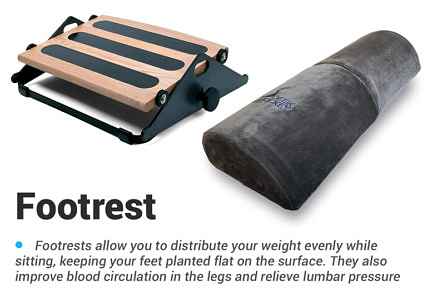
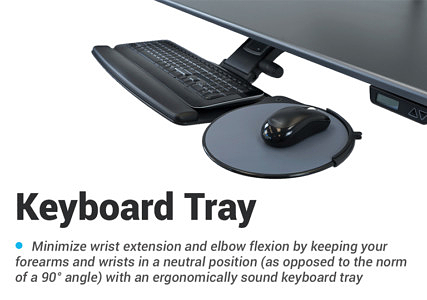
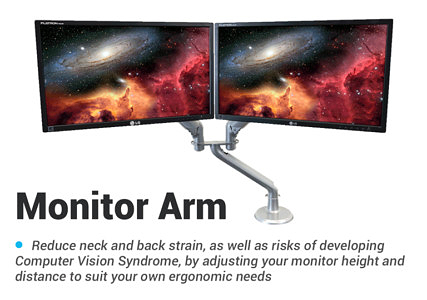
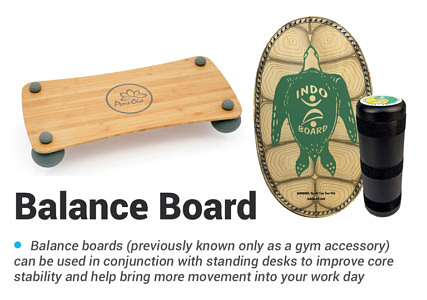
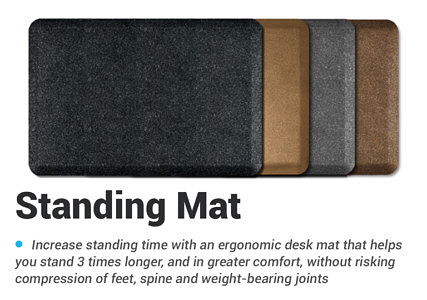
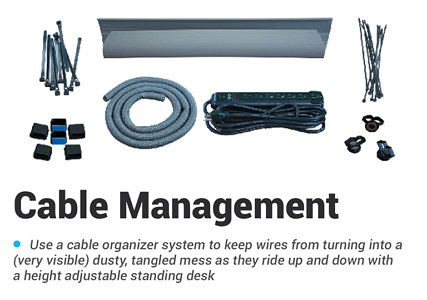
0 Comments
Leave a response >